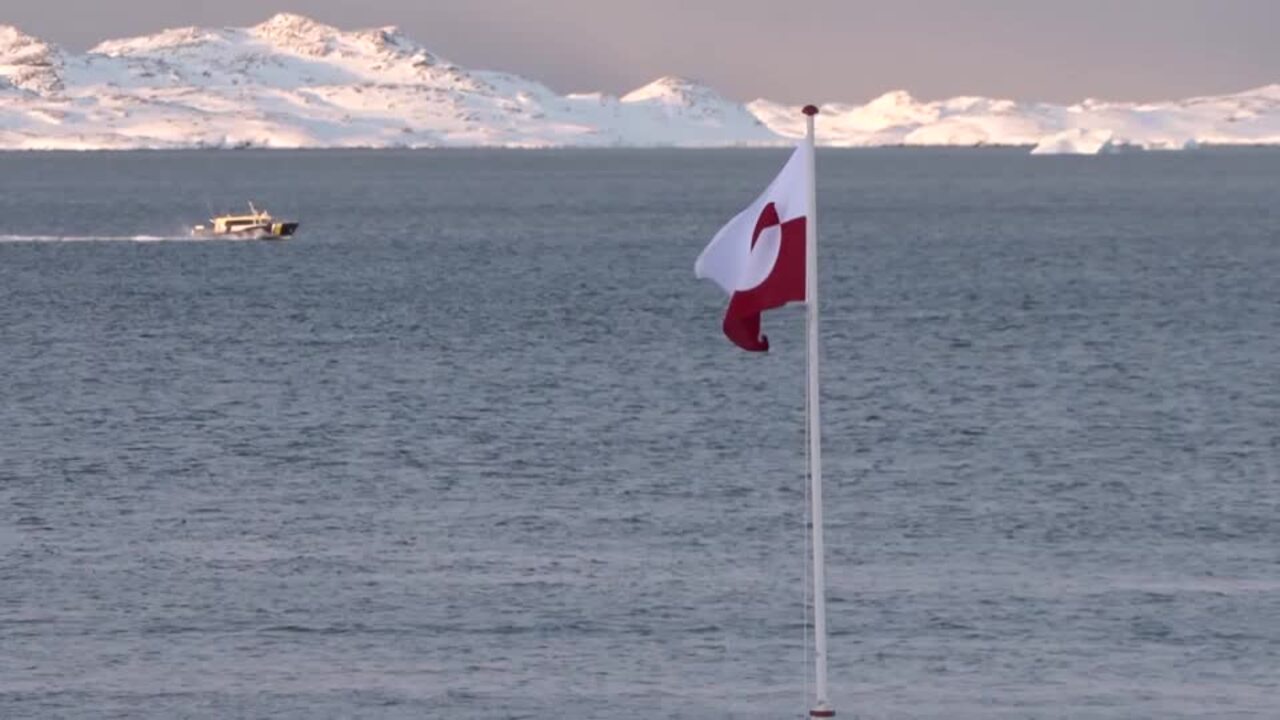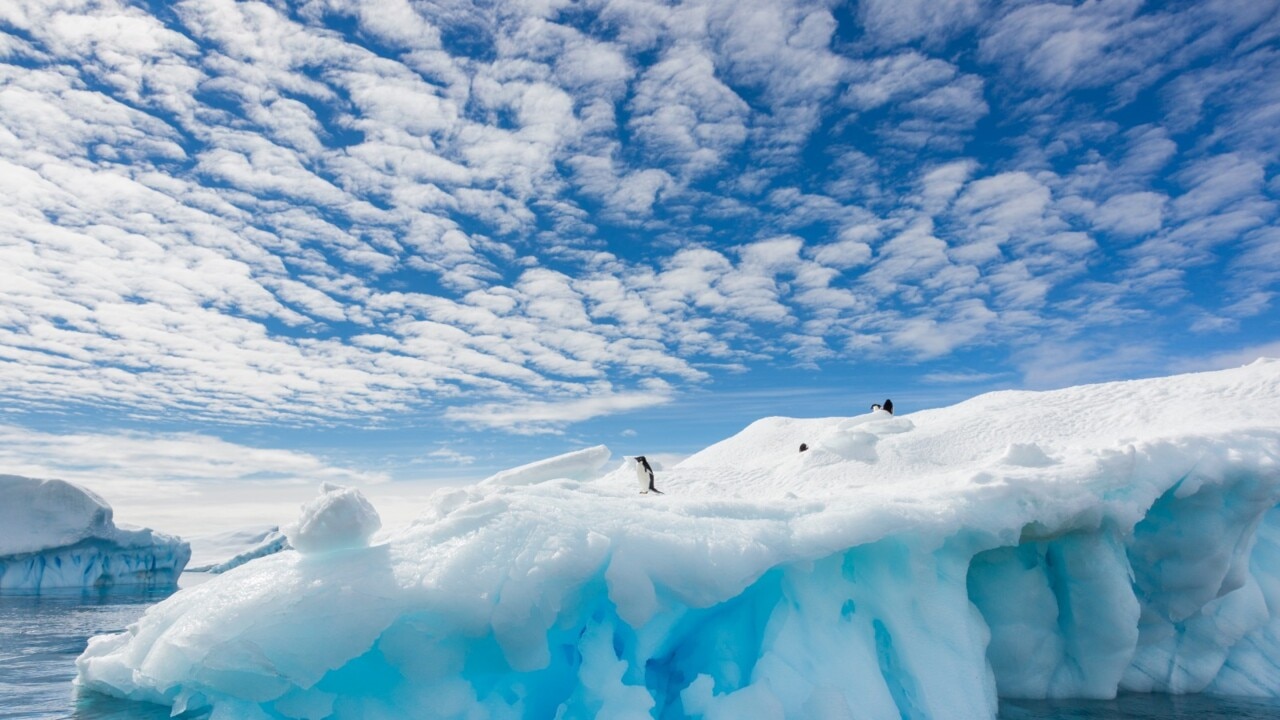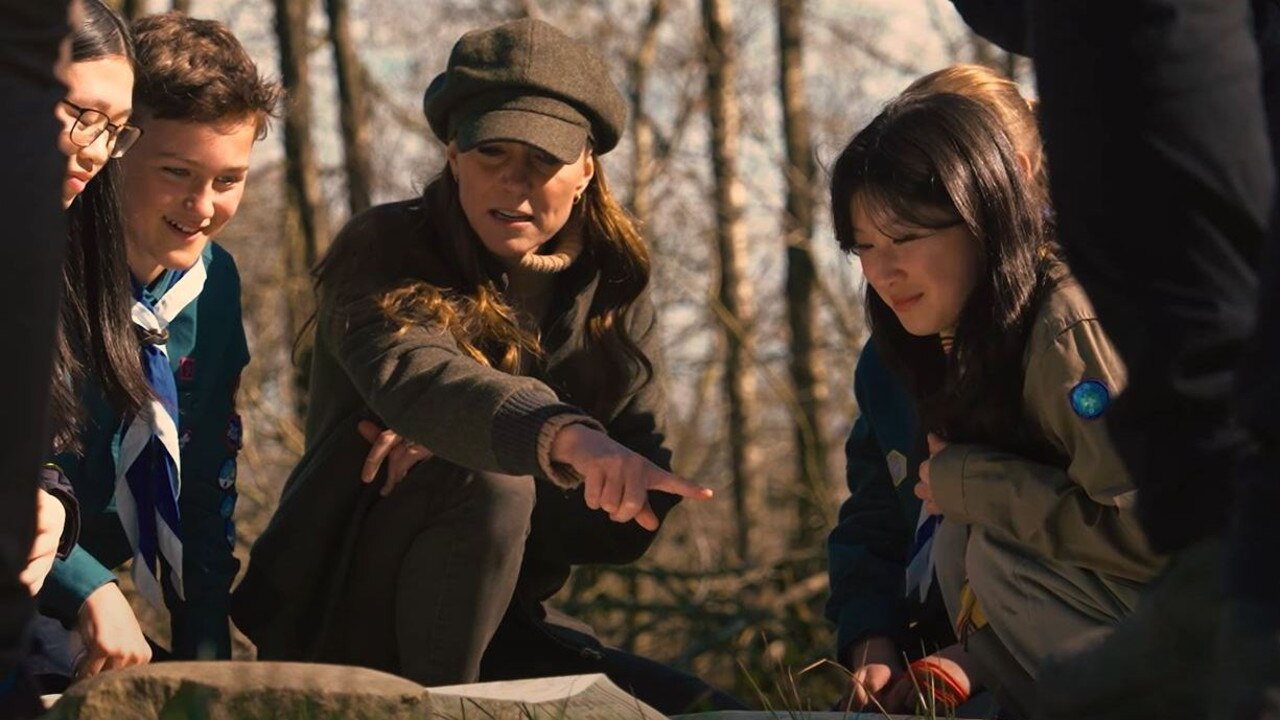Greenland’s fractured ice sheets are in retreat and warning our world
Hungry polar bears in Greenland have been known to wander into town from the melting sea ice in search of food – one was shot and turned into polar bear soup.

The guide prodded the snowy ground with a metal pole, checking for fresh cracks in Greenland’s gigantic ice sheet. When he discovered one, which happened every 20m or so, he made a line in the snow to be stepped over.
As global temperatures rise, the ice that covers much of Greenland – an Arctic island bigger than Queensland – is melting at a record rate, scientists say. In the long run, this could trigger a rise in sea levels, threatening coastal towns and cities across the world.
A more immediate concern when exploring the ice sheet, however, is to avoid plunging into one of the deep cracks – the crevasses – that plunge down into the snowy landscape. The fissures can be up to 60m deep and are filled with icy water.
Although the locations of most big crevasses are known to scientists and guides, Greenland’s ice is cracking faster than ever, according to a study published last week by researchers from Britain’s Durham University. As a result, new holes are appearing – and expanding – all the time.
“Try to walk in my footsteps, just in case,” said Kim Pliniussen, a guide with the Arctic Ice Tours company, shortly after crossing over on to the ice sheet.
The snow dunes stretched into the distance, the hypnotic expanse of whiteness broken only by the sparkle of blue glacial ice. When the wind dropped, the frozen terrain was enfolded in a deep and overwhelming silence.


The international row over President Donald Trump’s threats to seize control of Greenland seemed very far away. The cracks have been responsible for deaths through the years. The most high-profile fatality was in 2020, when Konrad Steffen, an Arctic scientist who was studying the effects of climate change in Greenland, fell into a deep crevasse and drowned.
Moments after Pliniussen’s warning, I slipped and tumbled headfirst into the snow, before regaining balance next to a slope that led into a gaping rift in the ice. Its murky depths were barely visible. “Don’t worry, I would have thrown you down a few sandwiches before going back to town for a rope,” Pliniussen joked.

Greenland’s ice sheet is almost 2.5km thick on average, according to NASA, and is the second largest in the world after Antarctica. Besides scientists, it also attracts tourists, mainly from Europe and the US.
For many of the Inuit, the indigenous people who make up most of Greenland’s population of 57,000, this passion for extreme tourism is a source of bemusement, as well as concern.
“The Inuit both honour and fear nature. The tourists who come here take far more risks than we do,” said Inuuteq Kriegel, a local journalist and photographer. “We respect it because we know how dangerous it can be.”
The ice sheet and the areas around it are possessed of a stark, otherworldly beauty.
Reindeer, arctic hares and arctic foxes roam wild, as do musk ox, horned animals that resemble buffalo. Hunting is restricted to approved areas and is allowed only at certain times of year.
Locals say the best way to lure a reindeer is to hold up your arms like antlers and make a grunting sound.

The ice sheet is most easily accessible along a gravel road from Kangerlussuaq, a tiny settlement about 50km north of the Arctic Circle that was founded by the American military during World War II. Known as the Sondrestrom air base from the 1950s, it remained in operation until the early ’90s, when it was handed over to Greenland.
In 1968, three American fighter aircraft crashed in the hills around Kangerlussuaq in bad weather. The pilots ejected to safety, but the aircraft were left where they fell.
Their wrecks still can be seen, although a combination of harsh weather and souvenir hunters have reduced them to barely recognisable chunks of metal.

The 35km road from Kangerlussuaq to the very edge of the ice sheet was built by Volkswagen in the late ’90s as part of a five-year project to test its cars in the extreme conditions there.
After the road was opened, locals said, an American tourist took a bus to the site of one of the crashes, where he retrieved a wallet from under the pilot’s seat. Noticing the astonished reaction of his fellow passengers, he explained: “It’s mine, I was the pilot.”
It is not known if there was any money left inside.
Hungry polar bears have been known to wander into town from the melting sea ice in search of food. One was shot a few years ago as it approached a school and Kangerlussuaq’s entire population of about 500 people feasted on polar bear soup that same evening.

Greenland’s ice, fjords and mountains mean there are no roads connecting its towns and cities. The only way to get around is by boat or plane.
Flights are prohibitively expensive, however: a return trip from Nuuk, the tiny capital, to Kangerlussuaq costs more than $1300. It is cheaper, Greenlanders say, to holiday in European resorts such as Tenerife than to travel around their own island.
The oldest ice in Greenland is believed to have formed before the dawn of humankind and can be roughly dated by its colour. The darker the shade, the older is it, explained Pliniussen.
“I sometimes take a chunk of very dark ice home with me and make my coffee with it,” he said. “I tell myself it’s much tastier when it’s made with water that is 150,000 years old.”
THE TIMES







To join the conversation, please log in. Don't have an account? Register
Join the conversation, you are commenting as Logout